This op-ed was originally published by RealClearPolitics.
COVID-19 has caused a perfect storm for the global economy, for our societies, and for our health. At the time of this writing, its true impact is still unknown; yet if current trends hold, its effects will be felt for generations. COVID-19 is holding up a magnifying glass to deep- and hard-set structural problems in our nation—problems that negatively impact our health and well-being.
As the reality of living with a pandemic becomes more evident, we are confronted with a mounting number of questions and a frustrating dearth of answers. These questions go far beyond the effects on physical health from the virus itself. How can we make ends meet if we can’t go to work? What happens to our children if the remainder of the school year—or even part of next—is canceled? Will jobs still be there after the virus subsides? What will the state of the economy be when the dust settles? And of our nation’s physical and mental health? The list of questions is long and growing. A critical challenge is to keep in place the connections and communities that are so important to supporting emotional health and well-being as we maintain life-saving physical distancing.
As a nation, the United States—like many other advanced economies—was already dealing with the fallout from the decline of low-skilled work. From the rise of populism and the backlash against globalization to, most starkly, deaths of despair—deaths due to drug, alcohol, and suicide—our problems have been deeply rooted in a codified structure that does not work for all people. Related challenges such as an increasingly frustrated population that has been left behind in rapidly growing middle-income countries and the disruption that artificial intelligence poses to labor markets in all economies only compound the issues. These processes have resulted in the gradual recognition of the limits of what income can measure and of the deep importance of things such as meaning and purpose, social connections, respect at the workforce, and perhaps most importantly, the necessity of belonging.
Enter the COVID-19 virus in 2020. It has delivered a huge blow to economies around the world the likes of which most living Americans have never seen. Low-skilled workers are especially at risk. Recent estimates of the labor market fallout in the U.S., based on Gallup data from April, show that 18 percent of the labor force has been laid off (most temporarily), and 33 percent of the labor force is experiencing either unemployment or reduced working hours. There were over 20 million unemployment claims filed in the month of April alone.
It is difficult to conceive of the long-term social costs of such a labor market shock. We know from the extensive literature on well-being that virtually everywhere the link has been studied, unemployment has been found to have persistent and significant effects in excess of those predicted by income losses alone. Closer to home, a 2017 study estimated that between 1999 and 2014, for each 1 percentage point increase in the county-level unemployment rate, opioid-related deaths increased by 3.6 percent per 100,000 people. Of course, a shock of today’s magnitude may play out slightly differently. For example, there may be less associated stigma as incidence is so widespread, or it may affect different places in different ways, as in the many economically depressed counties that already have a large percentage of the population out of the labor force. Yet it is difficult to imagine that there will not be severe and lasting effects.
Equally important, our best-intentioned responses have disrupted social connections and the role that they play in helping people cope with crises. This latter hit could have a major impact on deaths of despair, as the population that is most vulnerable economically tends to have fragile social and community ties and is most vulnerable to these deaths.
If past trends predict future outcomes, the short-run and medium-run implications are at best deeply worrisome and at worst devastating. Most of the strategies known to be successful in reversing trends in desperation involve pulling people out of isolation rather than into it, which is currently impossible for obvious public health reasons. Related to this, our nation was already dealing with unprecedented challenges with mental health and addiction, most obvious in the ongoing barriers for people to gain access to, and afford, mental health care. The fraying of the public safety net is now evident to all, and the ripple effects will be felt for generations.
More lives were lost to drug, alcohol, and suicide in 2017 than any year since 1999, when the Centers for Disease Control began collecting this data. Public policy had not changed in response to this grim realty, and most of the proposals were piecemeal solutions. None meaningfully connected the dots between the social-, economic-, and health-related factors at work. Most of the national dialogue focused on health insurance and coverage rather than on why people were dying from despair in the first place—and what to do about that.
These issues are particularly important in the U.S., as we have a far less extensive and effective social safety net than do other countries of the same, and even lower levels of income. Our well-being levels—as assessed by both inequality of well-being (differential levels of hope for the future and stress across the rich and poor, for example) and our average levels of well-being (the U.S. was 17th in average country-level life satisfaction in the world rankings in the 2019 World Health Report) are surprisingly low compared to those of other wealthy countries.
The research is clear that social connection matters to our health. Despite this, even prior to COVID-19, as a nation we are more socially disconnected, isolated, and lonely than we should be, particularly considering our connectivity through technology and social networks. It is ironic that despite our hyper-connectivity through social media, our feelings of belonging and connection remain low. This loneliness and social isolation hurts our health in significant ways. In our necessary attempt to reduce the spread of the virus to our most vulnerable neighbors, we risk deepening social isolation and its negative effects. We must respond with creativity and compassion. In thinking about policy responses, at both federal and local levels, we must include those that can address some of the underlying problems communities everywhere will face in the economic, social, and health arenas.
As with most policy, we must target our efforts to the most vulnerable cohorts. Low-wage workers without a college degree—the same people who are most vulnerable to deaths of despair, particularly in places where manufacturing and mining jobs have hollowed out—are the most likely to lose their jobs or to get sick if they stay on the job in essential sectors, such as pharmacies and grocery stores. They are less likely to have health insurance, and almost certain to lose it if they lose these jobs. This sector of the labor market was already suffering from declining wages, poor quality jobs with unpredictable working hours, and inadequate benefits, if any at all. The gains from the last few decades of growth have gone to the top, while their wages have stagnated or even fallen during the same time period.
It is not a stretch to imagine that their already low markers of well-being—such as lack of hope and high levels of stress and reported pain—and poor indicators of objective health—such as high levels of diabetes, obesity, and heart disease, among others—will only worsen. To the extent much of this fragile population becomes unemployed or joins the approximately 20 percent of the prime-aged population that has permanently dropped out of the labor force, the outcomes could be dramatic. The prime-aged male population already out of the labor force is disproportionately represented in opioid use and addiction, in markers of isolation and lack of purpose, and more likely to live in places with high levels of deaths of despair. An increase in this population coupled with a sharp reduction in the kind of community-level support efforts that are starting to make a positive difference is cause for deep concern. Since the sharp unemployment increase in March, for example, there are already some reports of increased gun purchases (guns account for the majority of successful suicide attempts) and calls to suicide hotlines.
Some new studies in the U.K. have estimated the trade-offs entailed in prolonging lockdown to save lives from COVID-19 versus the economic and mental health costs of doing so. They use well-being metrics to calculate the monetary equivalent of well-being losses associated with unemployment and lost incomes, isolation and loneliness, domestic violence and child abuse, and suicide and other mental health-related outcomes, compared to the monetary equivalent of a prevented fatality for the “average” person. They estimate that each additional month of lockdown in the U.K. would save approximately 35,000 lives for the next four months (assuming there is a second spike due to opening earlier), but each additional month would have higher costs in terms of well-being. The point here is not to make a conclusive choice of when to reopen the economy, but rather to highlight how the well-being approach provides a new frame for assessing the complex trade-offs that these decisions entail.
This is a complex social, economic, and health challenge, and there are no magic bullets. While there are, no doubt, many other proposals on the table, we offer two ideas that could prompt some discussion and further thinking about ways to protect the most vulnerable in our society.
The first is aimed at dealing simultaneously with the over-demand for health care and the under-demand for labor resulting from the pandemic. Hospitals are filling up with sick people; hotels are sitting empty. What if we were to use the empty space for extra sick beds and at the same time train willing laid-off workers from the hospitality industry in low-skilled jobs that support the health sector? This could help address the potential shortage of hospital beds and provide gainful employment in support sectors. These could include cleaning rooms, delivering meals, and assisting patients with basic hygiene tasks, things that will be in increased demand as the crisis deepens. Many of these jobs require skills that are complementary to those that hospitality sector workers already have. We could also involve laid-off workers in the contact tracing efforts that will be a necessary part of our efforts to re-open the economy. Such efforts could potentially increase displaced workers’ sense of community and belonging as well as provide a living wage.
The second aims to harness technology to address the isolation that the necessary physical distancing is contributing to. While in-person support may be next to impossible at this time, there is an important role for social support, the provision of useful information, and even suicide hot-lines, among other things. In the absence of in-person support, there is evidence that isolated or despondent individuals can benefit a great deal from having access to a social network, which could range from simply talking to trained listeners who can both provide solace and simple counsel to purposeful activities. Individuals could also contact first responders in situations that are more desperate. We imagine something like an ill-being clearing house or call-in center, where people can reach out for support or counsel, or where the same individuals or their friends and families can call and warn of crisis situations when necessary. The services could be provided telephonically or online.
There are already some promising efforts on this front, including new regulations that allow for doctors to have video-conference appointments for opioid and other addicted patients, and accumulated experience in sharing expertise with COVID-19 patients via the social media networks of doctors. Some states are partnering with local-level efforts to provide online and phone resources to help people cope with mental health and even suicide prevention during the crisis, such as the state of Maryland and its Coalition of Families. These experiences could help broaden our thinking and experience in these arenas going forward, including into a post-COVID-19 world.
These ideas are intended to provoke a broader public conversation about vulnerability in our society and the fragile state of our social safety net and health systems. Indeed, this fragility is one reason the impact of the COVID shock has been greater for vulnerable populations in the U.S. than in other wealthy countries. We are, for example, the only rich country that does not have a national health system, and where unemployment results in the loss of health insurance. Thus, most people here lose two of the things that are most important to well-being everywhere—purposeful employment and decent health care—at the same time.
Given our respective experiences, we strongly believe that the social and mental health side of this crisis is as, and perhaps even more, important to our society’s long-term health and sustainability than the economic one. Neither solution will succeed in isolation, as desperate and unhealthy workers are not very productive, nor can desperation and its manifestations be addressed in a void of productive activity and opportunities, especially for younger cohorts who are looking at a bleak future. Public recognition of the importance of dealing with both sides of the crisis of ill-being—and the social infrastructure that is necessary to do so—would be a good first step. COVID-19 has us at a critical juncture where failing to respond could change our society—and any remaining remnants of the American Dream—for good, for better or worse.
Graham acknowledges the generous support of the Well Being Trust, among other funders, for her work on ill-being and deaths of despair. Brookings recognizes that the value it provides is in its absolute commitment to quality, independence, and impact. Activities supported by its donors reflect this commitment and the analysis and recommendations are not determined or influenced by any donation.
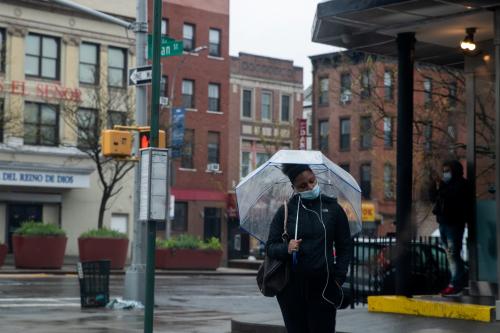
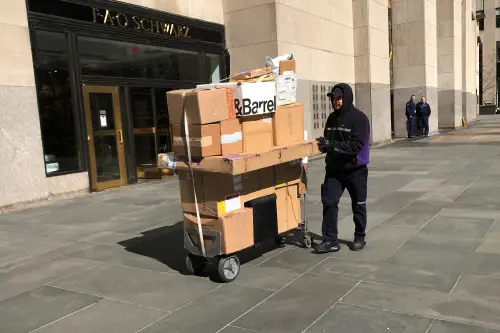

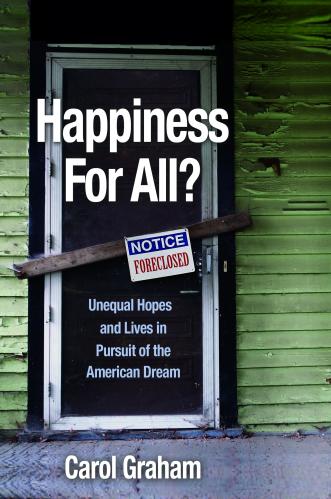

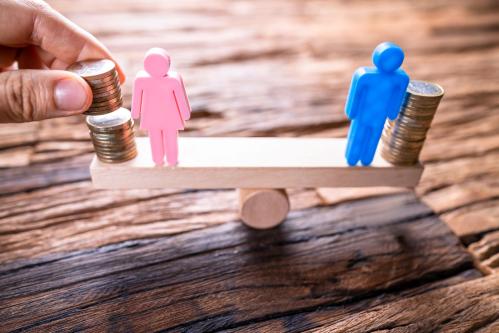

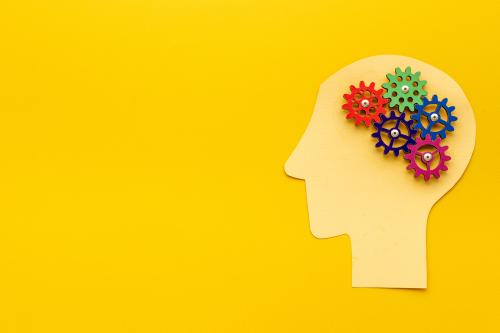
Commentary
Op-edProtecting our economy and our health in a pandemic
May 21, 2020